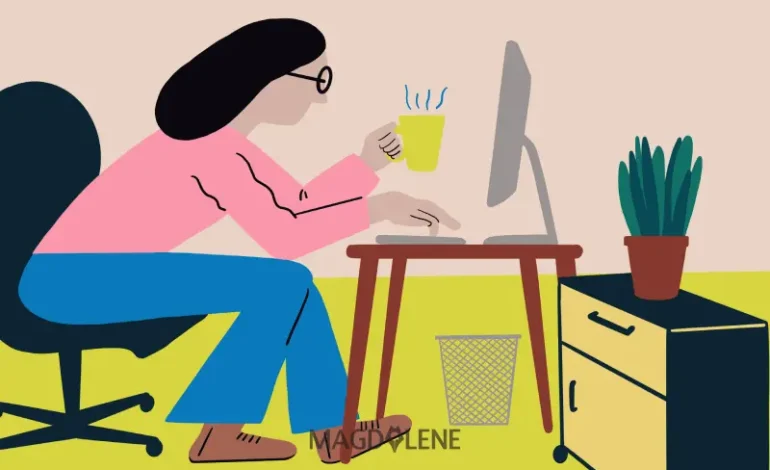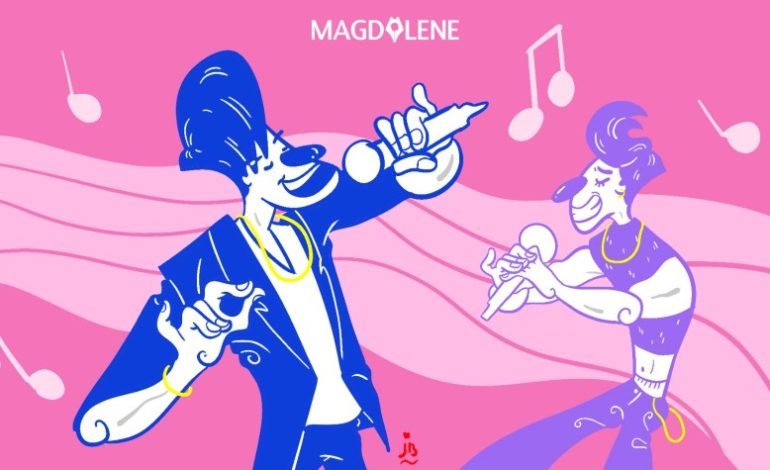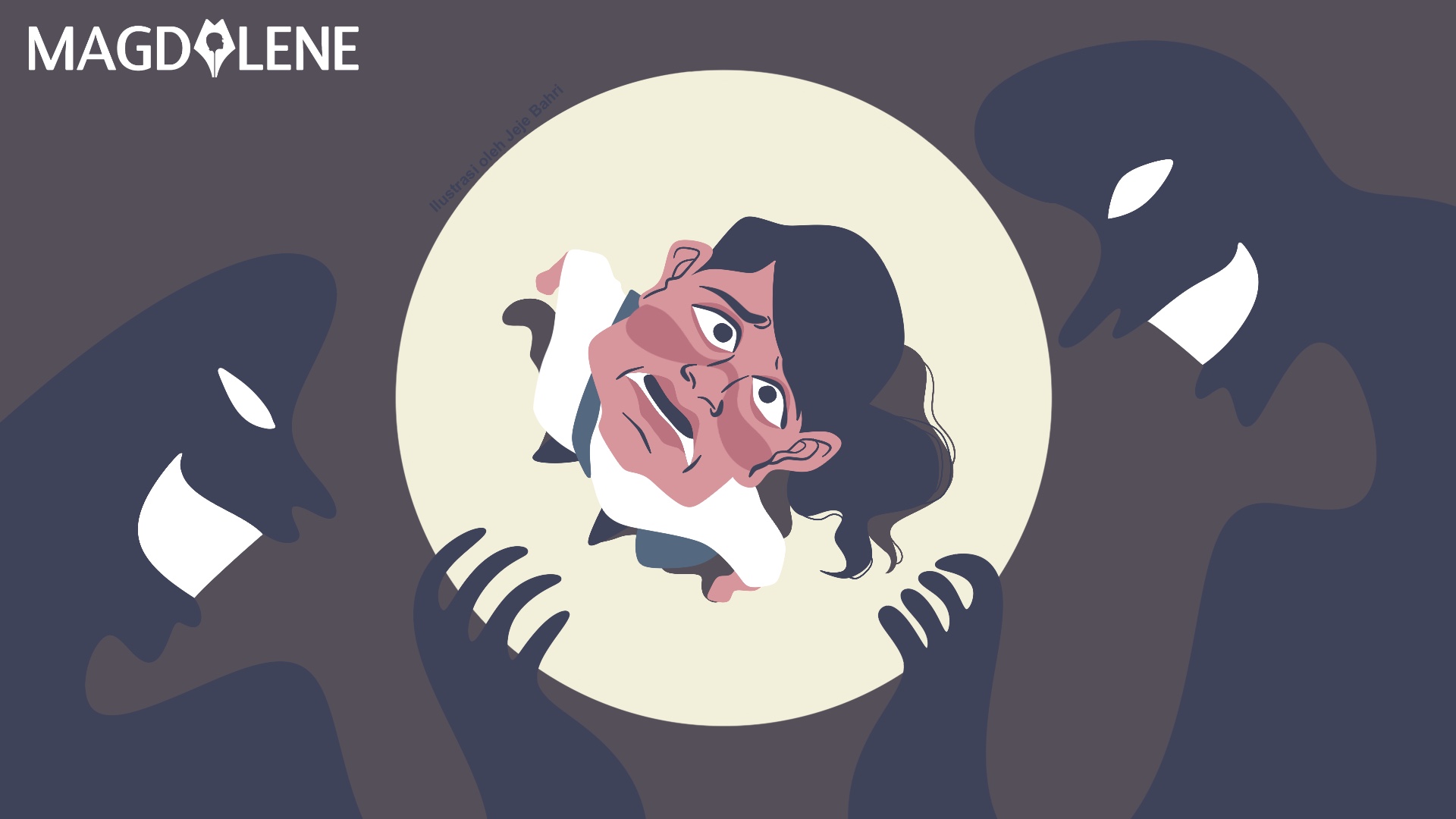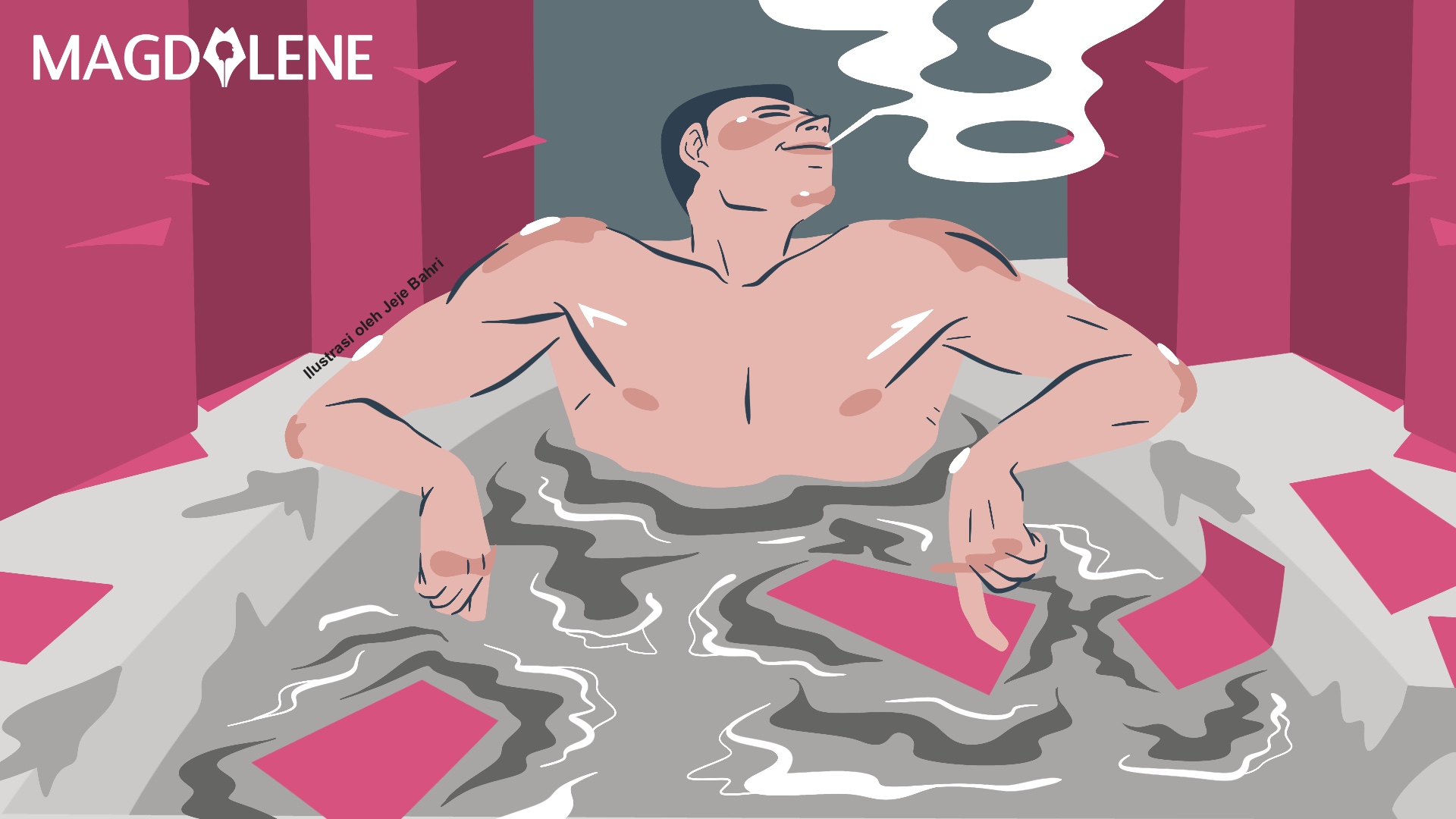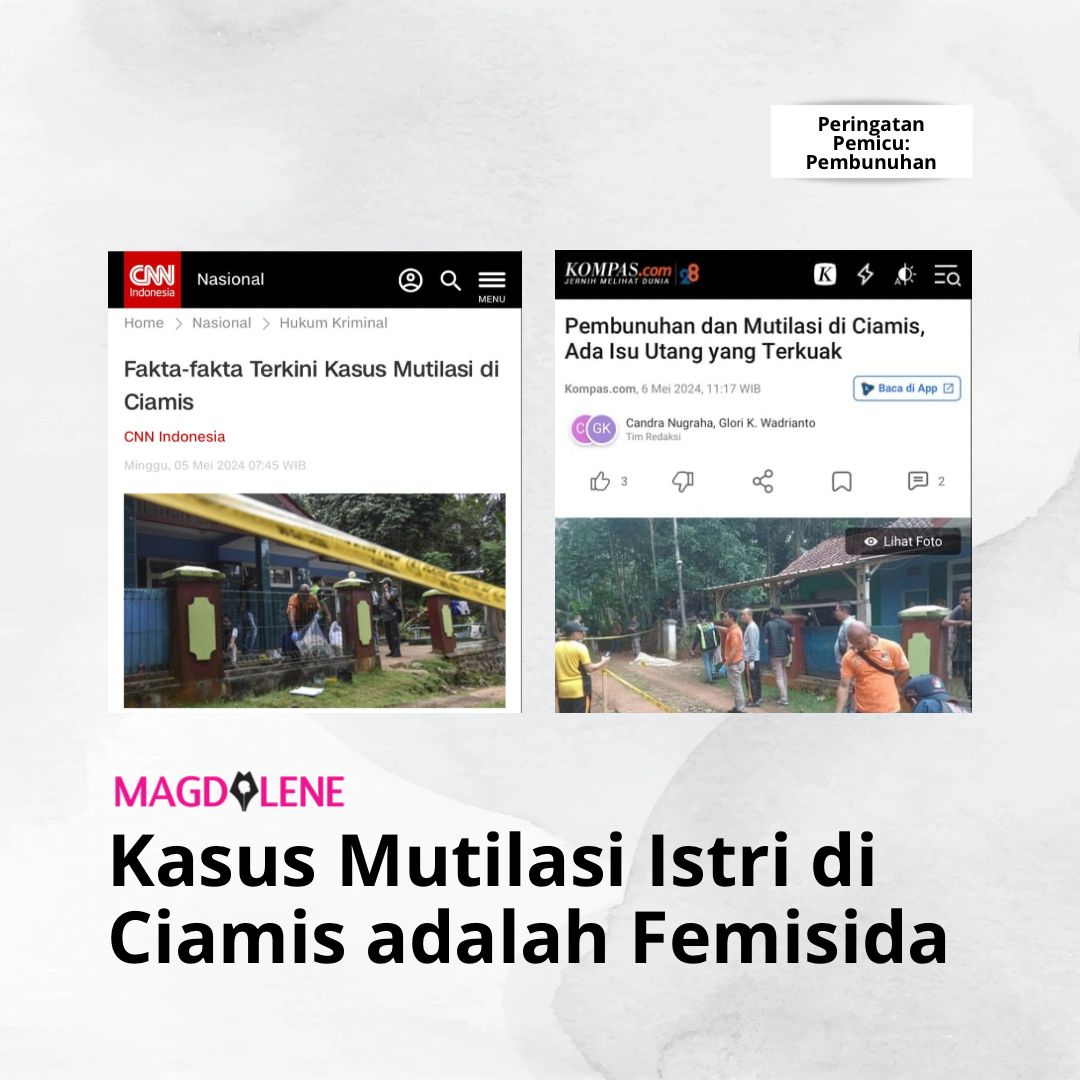Technology and Our Obsession with Beauty
Digital technology has spread and amplified the concept of #BeautyIsDiverse. But, how far has technology dictated our beauty standards?
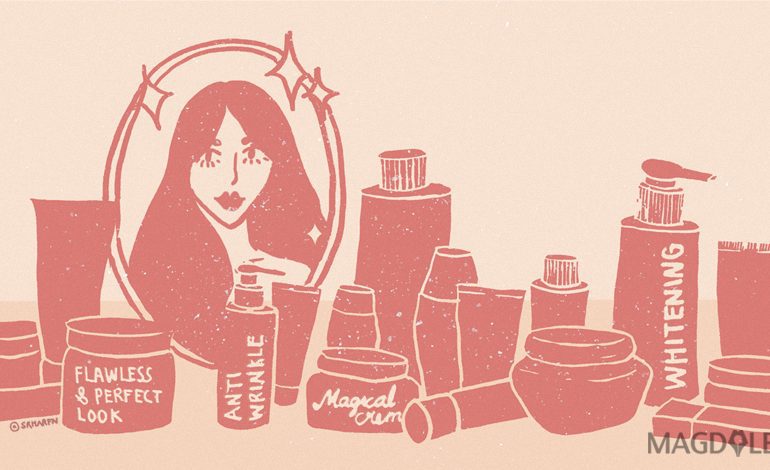
“Cheated on, dumped, and shamed for not being beautiful.”
That is how “Arista”, 30, summarises a messy chapter of her life after being dumped by her ex. It has been a year since then, but she still sees it justified to be cheated on by her ex simply for her less-than-ideal physical appearance.
“I used to be chunky, I didn’t have fair skin, I am not great with makeup –maybe I was an embarrassment to be with,” she tells Magdalene (10/8).
But things have changed in that department. With the breakup leaving her deeply insecure, Arista has since grown obsessed with skin lightening and body slimming products. Her Instagram algorithm started to flood her with cosmetics and skincare ads that she ended up buying and using frequently. For Arista, transforming into a beauty is the best revenge for the man who dumped her.
On the surface, Arista’s belief and response seems normal – a narrative perpetuated by the media and so deeply entrenched in our society. Take any course on dating, and one of the topics taught is how to restore your shattered confidence by maximizing your full potential, including becoming more beautiful. The problem lies in the question, whose version of beauty are we adhering to?
Indeed, beauty standards are not absolute; they are formed by social construct. The concept of “beauty” is created by the powers that be that control women and solidified by the media. This formula has been well documented throughout history.
If you look up the definition of “cantik” (pretty) in the Indonesian Dictionary (Kamus Besar Bahasa Indonesia – KBBI), some of the definitions offered are “a woman’s attractive face” and “attracting men’s attention”. Who are the people behind KBBI? You got that right: the government, through its Ministry of Education and Culture.
In June, we conducted an online survey involving 725 respondents across generations and genders, and spread out in 29 provinces and 127 districts/cities. The objective was to get a more comprehensive picture of on the perception of beauty and behavior surround it in relation to technology. Following the research, we also invited a number of respondents to participate in a Focus Group Discussion (FGD) to discuss our findings in the survey.
This has resulted in an interesting conversation. Most respondents agree that the concept of beauty as having fair skin has been around forever and is still prevalent in today’s generation. From the survey, 58 respondents defined beauty as literally having fair skin, while 35 percent others expand their definition of beauty as having “glowing skin.”
This perception has emerged since the time our ancestors were first exposed to communication technology. Looking back on history, a uniformed perception of beauty has even been around even during pre-colonial Javanese kingdom era.
Ayu Saraswati, author of Sensing Beauty, Sensing Race in Transnational Indonesia (2013) and a lecturer at University of Hawaii Women’s Study, says this sense of uniformity comes from whoever holds the power at the moment, through the simplest media communication to beauty product advertisements.
The era of digitalization has not changed the domination of certain beauty standards. Rapidly changing digital technology, the emergence of a variety of social media platforms, to the democratization of beauty through the influencer culture may not have shifted beauty standards a lot.
Beauty myths persists as online media (which number in tens of thousands, according to the Indonesian Press Council) routinely bombard people with their own outdated – not to mention sexist and colorist – definition of beauty in the news. The word “beautiful” is commodified and used to make us believe that we are not beautiful without being fair skinned, slim, or of mixed race.
Headlines such as “7 Beautiful Celebs with Milky White Skin”, “Staying Off Rice, These 5 Actresses Look Slim & Gorgeous”, “6 Celebrities of Swiss-Descent, Beautifully Mixed-Race”, “Features of The Naked Fair Skinned Beautiful Woman Found Dead in A Corn Field in Ngawi” have become our daily consumption.
These kinds of headlines strengthen our perception that beauty means meeting the media’s expectations. Also, not is a huge problem for women. In her seminal 2002 work The Beauty Myth, Naomi Wolf says the beauty myth is created as a tool to feminise women, so they are imprisoned in dissatisfaction with their own bodies, self-hatred and sickness from their inability to attract men.
This results in women being estranged in their own bodies. Their bodies are no longer fully autonomous because they are constructed by the market, society, culture, and economy. A woman’s body has become an artificial body and not her own, according to Anthony Synnott in The Body Social: Symbolism, Self, and Society (1993). This is no small thing.
A standard that requires women to be slim in order to be perceived as attractive, for example, has caused body dysmorphia and pushed women to seek cosmetic surgery, undergo extreme dieting, excessively use beauty filters on social media, or not feel confident when not wearing makeup. Just like Arista, 22 percent of Indonesians are unhappy with their bodies, as reported by research conducted by YouGov (2015).
To dissect beauty standards, our obsessions, and their relations to technology Magdalene launched its latest data journalism project called Beauty and Technology Series (2022).
Our editorial team produced four in-depth articles and four videos that cover the topics from how digital filters affect body dysmorphia, inter-generational beauty standards, the impact of influencer culture to the beauty industry, to what physical beauty is to men.
Those four videos and four articles are released over the course of a few weeks and can be viewed on social media (Youtube, Instagram), as well as our main site.
Below are some of the key findings from Magdalene’s June survey participated by 725 people:
1. Beauty Standards Are More Diverse, but Fair and Bright Skin Is Still the Norm
A total of 188 respondents say they use filters to lighten their skin tones, and 126 respondents say they edit their photos prior to uploading to social media.
This definition of fair skinned beauty confirmed the thesis of researcher Ayu Saraswati that fair skin is still considered the norm. The obsession with fair skin has made skin lightening products remain the bestsellers in the Indonesian cosmetics industry.
A research conducted in the first two weeks of August 2021 by Compas.co.id, a tech company focusing on business intelligence tools found that the majority of the 10 best-selling beauty products are skin lightening products. Leading the list is Scarlett Whitening (18.9 percent), with its key product, Scarlett Whitening Brightly Ever After Serum (151,492 transactions), and Scarlett Whitening Acne Serum (80,106 transactions). The next spots are occupied by Vitaline, Nivea, HB Whitening, SRI2, Dosting, Kedas Beauty, Bierlian, MS Glow, and Vaseline.
A standard that requires women to be slim in order to be perceived as attractive, for example, has caused body dysmorphia and pushed women to seek cosmetic surgery, undergo extreme dieting, excessively use beauty filters on social media, or not feel confident when not wearing makeup.
An encouraging discovery includes the fact that 82 percent of Magdalene’s survey respondents believe that a good personality (such as being confident and friendly, or having a great sense of humor) is a better definition of beauty today, followed by being presentable (525 respondents).
Why have beauty standards shifted? The answer is the increasing awareness and exposure to the concept and messages of equality, representation, inclusiveness, and social activism. Even Victoria’s Secret that has for decades defined beauty as slim, Barbie-like angels for decades, has shifted: now featuring athletes, LGBTQ+ activists, and plus-size models to represent the brand. Other brands like Nike, Gucci, Prada, and Zara have shown more inclusive marketing strategy, offering gender-fluid fashion as well as unisex clothing.
Commercial interest behind their moves aside, these brands make the message that beauty is diverse more amplified within our conversations.
2. Lack of Confidence and Body Shaming Help Create Body Dysmorphia
A total of 401 of Magdalene’s survey respondents admitted that they were not confident with their physical appearance. Of these, 92 percent women and 72 percent of men said they have experienced body shaming.
Analysis of the data confirm the many existing studies that link the lack of confidence and body shaming to technology. Lack of confidence comes from beauty standards perpetuated by the media, standards too expensive, even impossible to achieve, and often leave those desperate to meet them miserable.
In extreme conditions, lack of confidence also triggers body image disturbance, or anxiety that arises from body image and physical appearance. Some people with resources continually alter their physical appearances to fit the image, according to Deborah Rhode – a Law professor in the University of Stanford – in her book The Beauty Bias: The Injustice of Appearance in Life and Law (2010).
Moreover, body shaming can arise because everyone believes that being different is a “mortal sin”. Ruth C. White Ph. D wrote in “Body-Love, Body-Shaming, and Health” in Psychology Today that the tendency to shame women for not fitting into the ideal beauty construct tends to trigger eating disorders, body dysmorphia, and other mental health conditions such as anxiety and depression.
Clinical psychologist Syaska Narinda says body dysmorphia happens when someone continues to focus their attention on the parts of the body they deem are unattractive. This is when the dark side of beauty filters can take over, when someone is obsessed with ideal beauty standards, whether smooth skin, bigger or smaller nose or lips, higher cheekbones, pointier chin, more defined jawlines, or fox eye-shaped eyes like Bella Hadid.
Magdalene’s survey finds that 35.5 percent of respondents occasionally use beauty filters in social media apps. Lack of confidence tops the list of reasons they use the filters. Indeed, photo filter, more than a fun, harmless feature, has become a necessity to make one appears perfect on screen.
3. Nearly All Respondents Agree That Looking Beautiful is Also Men’s Right
An overwhelming 99.6 percent of the 725 respondents think it’s normal for men to use skincare. 73.3 percent of them or 536 respondents even think it’s normal for men to wear makeup. This acceptance continues to improve each year.
Our analysis shows a link to the rise of awareness for men’s body and skin care helped by increased promotion of male beauty brands’ on social media. Data from Euromonitor International in 2020 showed a rise in awareness for men’s body and skin care in men aged 18-25 in Indonesia, particularly during the pandemic, when men also spend more time at home.
Furthermore, many skincare brands have begun to popularize genderless beauty, such as Avoskin, White Lab, Everwhite, NOFILTER, MS Glow Men, Kahf, and Norm. Through these brands, male beauty is redefined, dismantling fragile masculinity in the process. The message being sent, it appears, is that skincare and makeup have no gender.
Why have beauty standards shifted? The answer is the increasing awareness and exposure to the concept and messages of equality, representation, inclusiveness, and social activism.
At the end of the day, we cannot talk about beauty while ignoring political correctness and social justice. No, not justice for the good looking only, because there is no one definition of looking good. That definition is for us to make.
This is the English version of the original article Teknologi dan Obsesi Cantik yang Problematik
This journalistic project is supported by Meedan, a global technology not-for-profit that builds software and programmatic initiatives to strengthen journalism, digital literacy, and accessibility of information online and off.
Editor-in-Chief: Devi Asmarani
Managing Editor: Purnama Ayu Rizky
Editor: Aulia Adam
Reporter/Researcher:
Aurelia Gracia, Jasmine Floretta, Vania Evan, Theresia Amadea
Graphic Designer: Jeje Bahri
Camera and Editor: Tommy Trdkr
Web Developer: Denny Wibisono
Social Media: Siti Parhani
SEO Specialist: Kevin Seftian
Community Outreach: Paul Emas
Community Outreach Assistant: Tenny Maria
Digital Media Assistant: Chika Ramadhea
Data Analyst: Wan Ulfa Nur Zuhra (IDJN)

